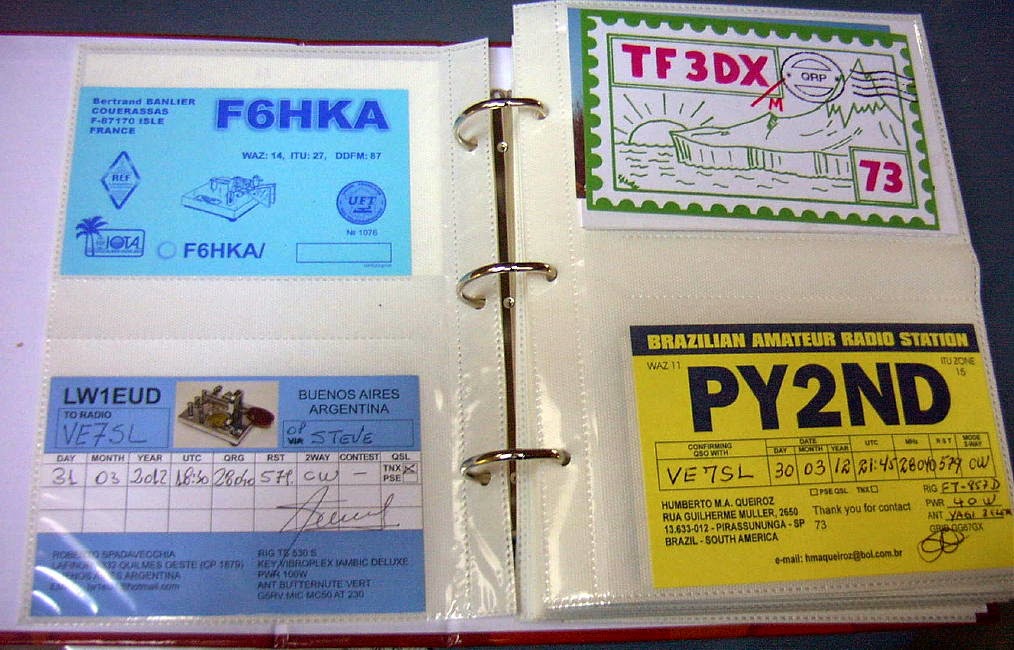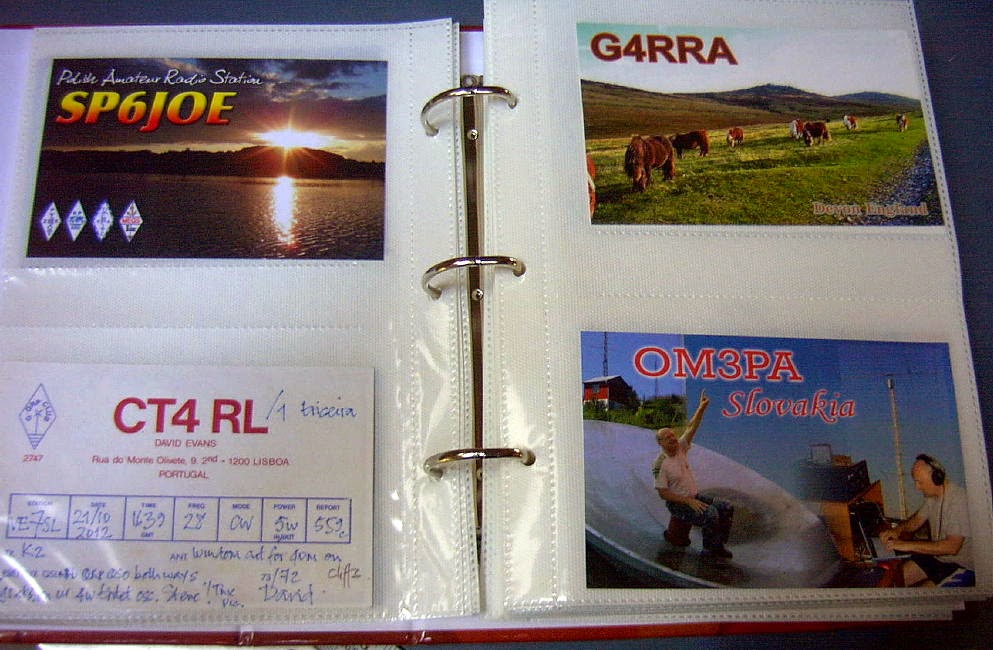Posts Tagged ‘cycle 24’
 Cycle 24….Still Teasing
Cycle 24….Still Teasing
 |
| Courtesy: http://www.noaa.gov/ |
With the solar flux index remaining relatively high over the past week, the F2 MUF has been spending most of the day in the mid 40MHz region. For 6m operators, it's always a good sign to see the MUF climb this high as it only takes a nudge to keep it climbing, hopefully to reach that magical 50MHz level.
The region between 10m and 6m is chalk-full of commercial two-way FM activity, particularly from 39MHz on up. With the skip zone running east-west, oftentimes the distinctive Boston accent or the unmistakable Bronx chatter can be heard...police, taxis, fire departments...sometimes even with sirens blazing away in the background. Other times, things will be further south, with accents favoring easily-recognized southern drawls.
Early this morning at 0641Z, a small M1.8 flare added some extra fuel to the F2 fire, resulting in an unusually early-morning rise in the MUF.
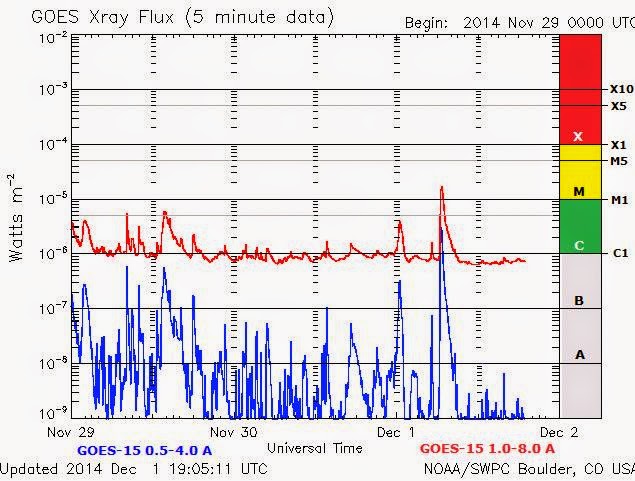 |
| Courtesy: http://www.solarham.net/xray2.htm |
By 0900 local time, it was hovering around 46-47MHz when I started to hear the 22-watt W4CLM beacon near Atlanta, Georgia. Warming-up the transmitter and calling a few CQ's on 50.098, I was soon answered by Bob, N3LL, in EL86 on the west coast of Florida ....a nice single-hop (2600mile) F2 QSO. Another CQ brought KJ4E in EL98, to the northeast of Bob.
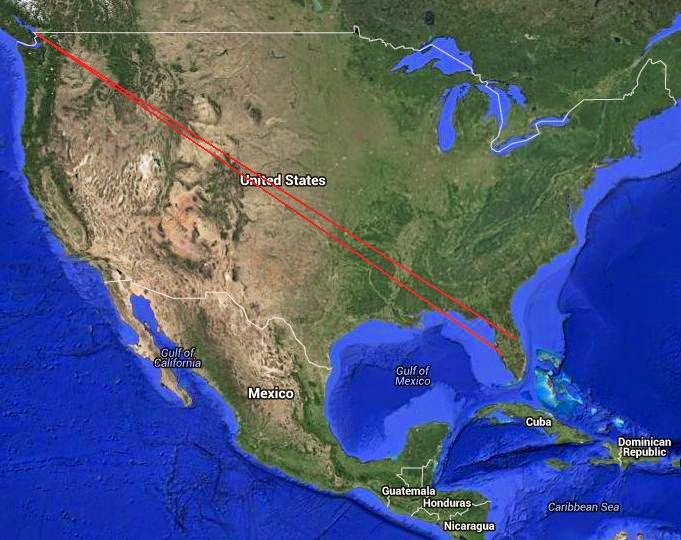 |
| Courtesy: https://maps.google.com/ |
From here, things went south fast and for some reason, the normally slow climb halted as the MUF quickly retreated to the low 40MHz regions...it was all over.
The end of the opening can be clearly seen in the geomagnetic activity recorded at the Kiruna Magnetometer (Sweden). The circled area indicates the period of high MUF:
...but what started the sudden spike in the MUF today...was it the earlier flare or the suddenly south-going 'Bz' component of the Interplanetary Magnetic Field as seen about an hour earlier?
 |
| Courtesy: http://www.solarham.net/solarwind.htm |
I wonder what surprises tomorrow will bring?
 Solar Flare Magic
Solar Flare Magic
 |
| Courtesy: http://www.noaa.gov/ |
Cycle 24 continues to behave like few others! The slowly-decaying cycle released a major solar flare at 2247 UTC Friday....afternoon on the west coast. Topping-off at X3.1, it was the sixth-strongest of the cycle and originated from sunspot 2192, the largest in the past 24 years.
 |
| Courtesy: http://www.noaa.gov/ |
Since then, there have been three more major flares from this same region, one at X1.0 (on Saturday) and the most recent (this morning) at X2.0. Oddly enough, none of these flares have produced CME's as little plasma release has been detected. Any associated auroral events will be very weak or unlikely in spite of region 2192 being geoeffectively positioned at the time of the flares.
However, the near light-speed arrival of Friday's emitted UV radiation caused a fast rise in the muf as spotty signals from various regions of South America were soon being heard on 6m in North America.
The most prominent signal was that of CX7CO (Carlos), in Montevideo, Uruguay. Thanks to the ever-alert KE7V, who posted news of the sudden arrival of Carlos, he was widely worked around North America including the west coast, a region that is usually left-out of the action. Known to have worked Carlos from here were myself, VE7XF, VE7DAY, KE7V, K7CW and possibly others outside of my hearing range. Shortly after working the west coast, Carlos was heard working JA's as his signal became weaker.
The distance from Mayne Island to Montevideo is 11,425km (7100 miles), which would tend to indicate that the contacts were a result of F2 propagation. Some have suggested a Sporadic-E-to-TEP link but I have my doubts...several 'TEP markers' were not present and there were no signs of any Es activity from this area. Although his signal peaked at 569, it is not uncommon for F2 signals to be weak, unlike the bone-crushing levels they can sometimes reach.
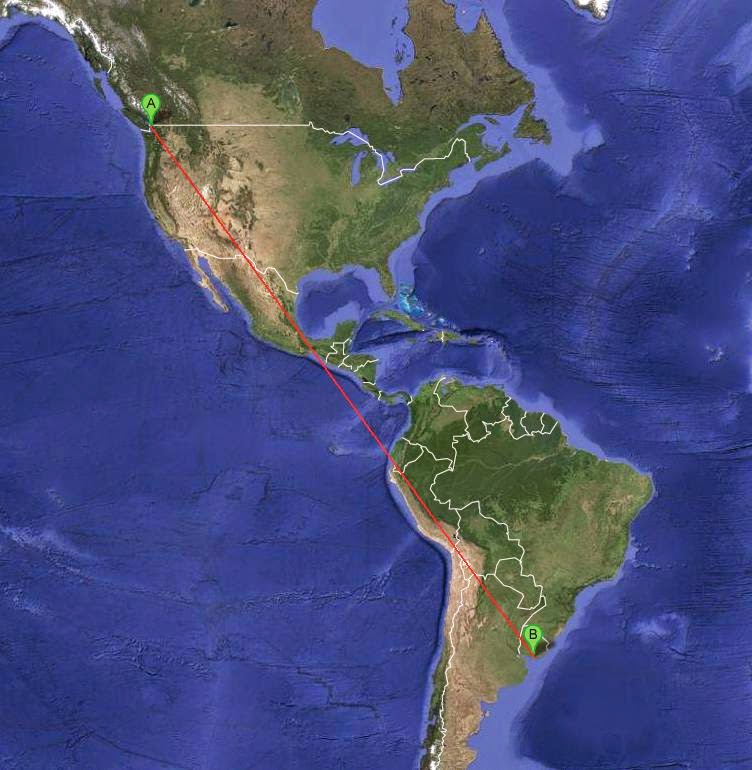 |
| Courtesy: https://maps.google.ca/ |
 One More Winter For The Tri-Tet-Ten?
One More Winter For The Tri-Tet-Ten?
I originally built what I called the "Tri-Tet-Ten" to test out a long-held idea of actually working Europe on 10m, using just a single-tube tri-tet oscillator and a 40m crystal. I had no idea what amount of power might be obtained on 28MHz from a single 6L6 crystal-controlled oscillator, quadrupling from 40m to Ten. After building several configurations as well as trying five different tube types, I was pleasantly surprised to end up with almost five 'clean' watts of 10m RF on my 40m crystal's 4th harmonic! I suspected that the tone would be unusable but the tri-tet proved to be surprisingly good at isolating the oscillator from the output stage. Although chirpy, the signal is indeed usable and somewhat reminiscent of what so many 10m CW signals must have sounded like at one time.
Having completed the transmitter just in time for Cycle 24's hoped-for great 10m conditions, it turned out that only a couple of one-week periods over the past three winters where good enough to reach Europe. During the two "double-peaks" I worked many dozens of Europeans, all of them in response to my crystal-controlled CQ's, mostly on 28.042kHz.
 |
| Courtesy: http://www.noaa.gov/ |
Nobody was more excited than I, the first time I heard a reply from Europe....it was from G4RRA who, as fate would have it, recorded my signal on that early October morning.
There were a few mornings when I had long pileups and worked Europe for several hours, most of the time shaking my head in disbelief that such a simple transmitter could provide so much DX pleasure...but really of course, it was mostly the great performance of Ten....the "other magic band".
I really doubt that 10m will once again support European conditions good enough for my one-tuber but it's still fun to work the U.S. With Cycle 24 on the decline I was happy to see that F2 has returned to Ten once again and this week I sparked-up the tri-tet to enjoy the propagation.
My chirpy return to the band produced many enjoyable QSO's..... NG2T (NY), KD8IFJ (MI), K9DP (IN), KA2MLH (NY), W4NA (VA), N4OW (FL), K8NS (FL), N5AF (TX), WA5AFD (OK), K5TIA (TX), K9DX (IL) and VE3IKV/m, boldly travelling along the freeway at 120kph!
So....if you hear a chirpy CQ just a smidgen below 28.042, please.... give me a call!
Will I be lucky enough to squeeze out one last winter of tri-tet fun before having to move down to 15 or 20m? Time will tell....but somehow it won't be quite the same as riding that delicate 10m ether over the pole to Europe, on just one tube.
 Cycle 24 Battles On
Cycle 24 Battles On
 |
| Courtesy: http://www.nasa.gov |
 |
| Courtesy: http://www.nasa.gov |
Video of the event shows what looks like a near full-on earth-directed hit but for a northerly component. Only time will tell.
Sky watchers as well as VHFers should be alert for possibly major auroral displays on Friday or Saturday.
 Capricious Cycle 24
Capricious Cycle 24
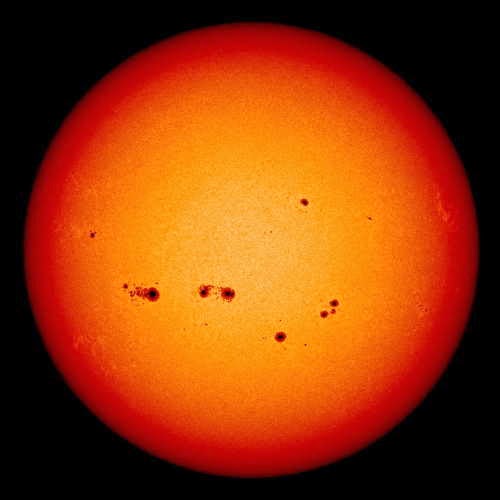 |
| July 6th - Courtesy: nasa.gov |
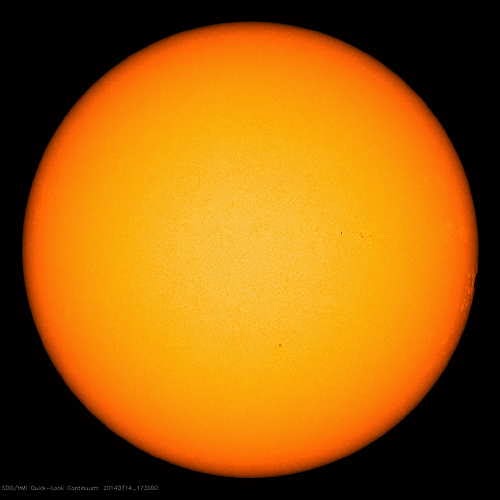 |
| Sun Today - Courtesy: nasa.gov |
What a difference a week can make, even on something the size of the sun! Boasting an SFI of just over 200 on July 6th, today's numbers have fallen to 109 along with the disappearance of most sunspot activity.
It's really too bad that this last surge of activity did not occur in November or December when we would have seen a marked increase in HF F2 conditions, along with a tiny hope of some 6m intercontinental propagation. Normally, here on the west coast, we have at least one or two 6m openings to Europe each summer, lasting from a few minutes to several hours. So far this summer, this transpolar path has been missing and I suspect largely because of the high level of solar activity. The long haul transoceanic openings that we have had (to Japan and to Africa) did not have to traverse the signal-absorbing polar auroral zone as would normally be the case. Whether these transpolar openings in the summer are true Es or something different is a topic for deeper discussion!
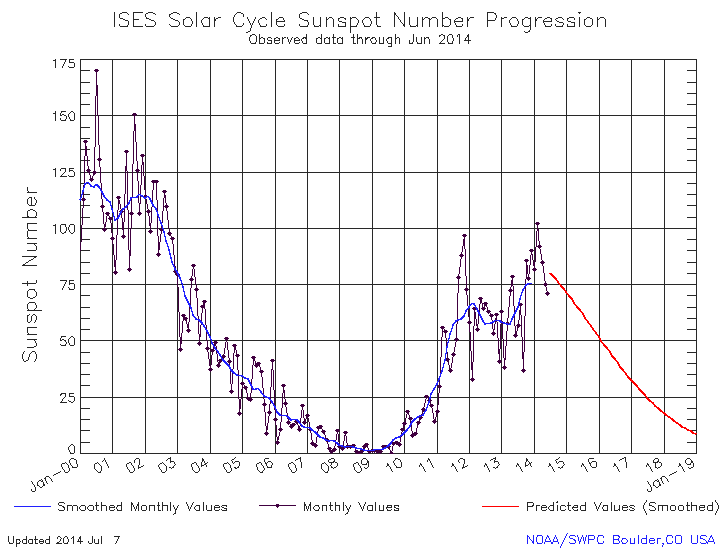 |
| Courtesy: http://www.swpc.noaa.gov/SolarCycle/ |
I'm hoping, and somehow suspect, that this isn't the last hurrah for what has generally been a most unusual solar cycle.
 Third Peak For Cycle 24 ?
Third Peak For Cycle 24 ?
 |
| July 06, 2014 Courtesy: nasa.gov |
When looking at today's solar image, it's difficult to believe that Cycle 24 is the weakest cycle in the past 100 years. It's also hard to believe that it is on the way down. With the solar flux numbers hovering around the 200 mark, one wonders how great conditions might be had this been happening in mid-November rather than in mid-summer. In spite of the month, propagation over the pole from VE7 land continues to be excellent on the higher HF bands.
 Cycle 24 Still Crackling
Cycle 24 Still Crackling
 |
| The Sun Today / July 03 Courtesy: nasa.gov |
 |
| Cycle 24 Prediction (courtesy: nasa.gov) |
The present rotation has brought a number of active sunspot groups into view along with several small solar flares. The elevated solar flux has had an immediate effect on propagation, producing excellent F2 conditions on the higher bands. Today's solar flux is pushing 170 and on the rise! It makes one wonder what other strange tricks Cycle 24 might have up her sleeve for us yet?
Active flaring during the summer 50MHz sporadic-e season can often produce some odd long-haul paths along with the possibility of some transcontinental auroral-e propagation....so hold on, as it looks like the ride is not yet over!



